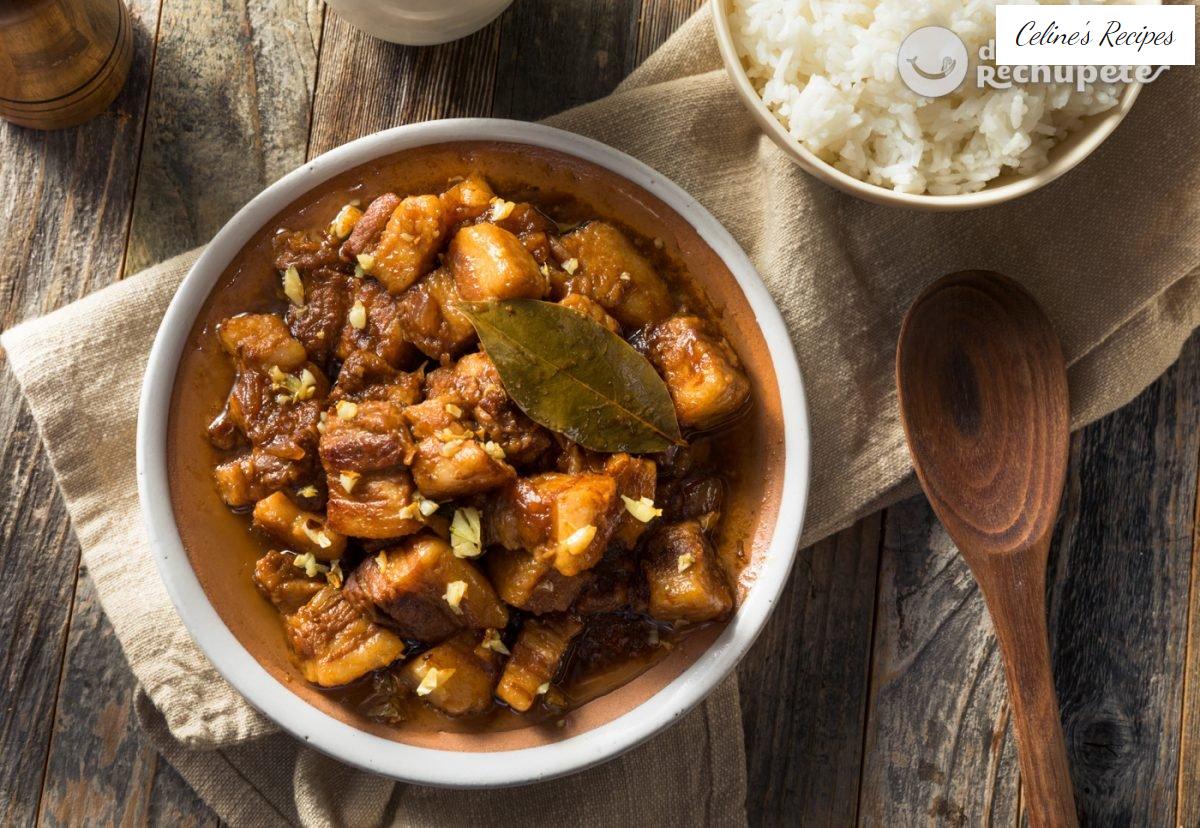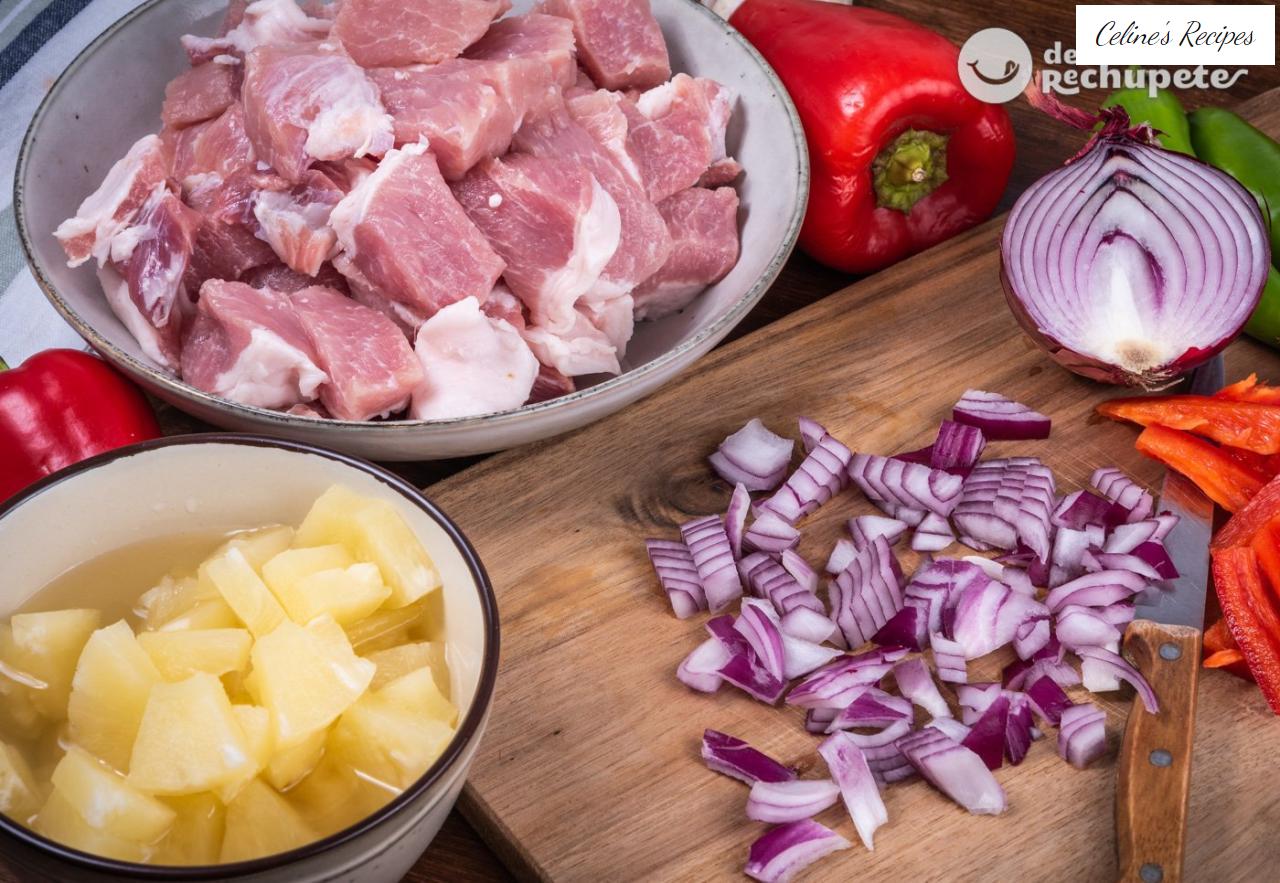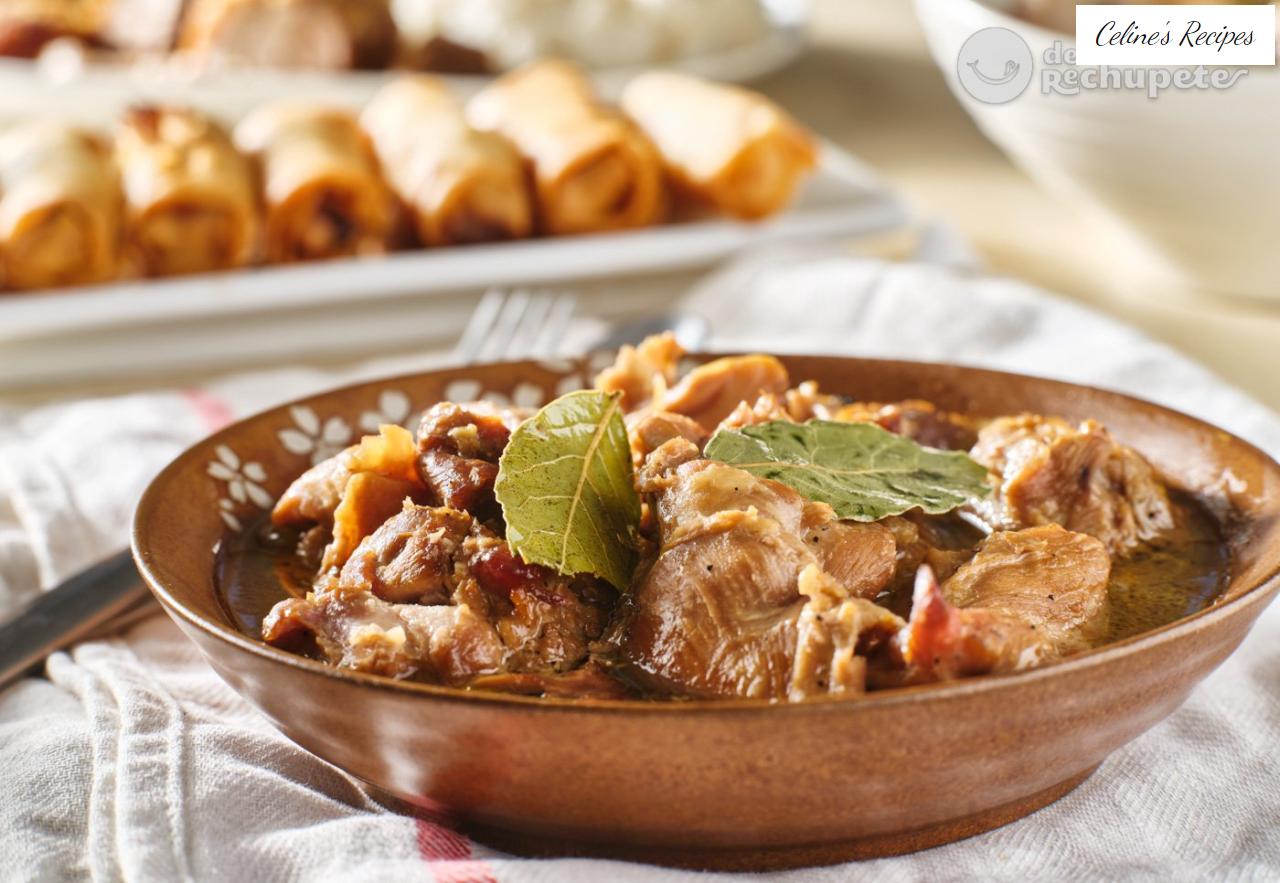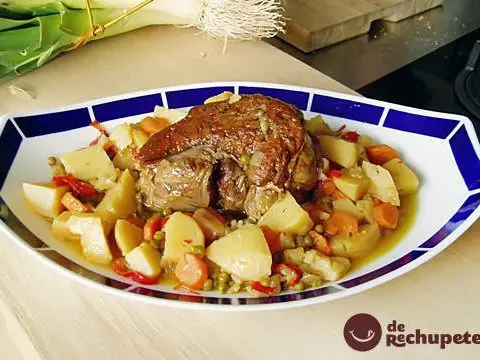
For 4
€ 2.2 /pers.
202 kcal/100g
Ingredients
- 1 kg. lean pork
- 120 ml. soy sauce
- 120 ml. of rice vinegar (if you don’t have it, add 80 ml of white wine vinegar)
- Salt (6 g approx.)
- Freshly ground black pepper (1/2 dessert spoon)
- 3 garlic cloves
- 1 red onion or 1 chive
- 1 red pepper
- 1 green pepper
- 4 bay leaves
- 2 slices of natural pineapple or in its juice
- 4 tablespoons mild olive oil or coconut oil
- As a garnish: Basmati rice
The dish we are here to talk about today is a pork adobo from the Philippines . Although its origin is somewhat complicated to determine, certain aspects of it are known about how it has become one of the most common and loved dishes by Filipinos.
As it is a traditional meat recipe , there is no correct way to prepare it, but everyone still enjoys eating it, whether they are passionate about cooking or not. There are several details of its preparation that are under discussion, although what is clear is that everyone should try it.
Actually, in this pork recipe what we do is season the meat with black pepper and garlic, which is then stewed in rice vinegar. Resting is very important so that all the flavors are captured. This is an aspect that all the preparations of this dish have in common, as the base of this dish, although then the issue of adding one or another vegetable or the issue of pineapple is already a general debate.
The total preparation time is 1 hour and 15 minutes , although the meat rests with the marinade for more or less one night. It is best to leave it in the refrigerator overnight to prepare it the next day. Do you dare to prepare it?

Preparation of Filipino-style pork adobo
- The first step to prepare this dish will be to cut the lean pork into small cubes and then we will chop the red onion and the peppers into small squares or brunoise. We reserve.
- Next, we will slice the garlic and place it together with the ingredients we have just prepared in a large bowl. We add the same measures of rice vinegar and soy sauce (120 ml of each). Next we will include the bay leaf and let our meat marinate for a few hours. It is advisable to leave it prepared for the next day.
- In a large saucepan or casserole we will put 4 tablespoons of extra virgin olive oil (coconut oil is usually used in the Philippines) and we will let the meat brown without having added the rest of the ingredients. It will take 10 minutes during which we will have to stir so that it is done on all sides.
- Add the marinade and let it cook for about 50 minutes over medium-low heat. If it is excessively dry, we can add a little meat broth or water since the meat must incorporate all its flavor at the same time as it caramelizes.
- The pineapple theme depends on the taste of each house, I love the bittersweet touch it gives to this recipe, but it is an optional ingredient. It would be added halfway through cooking, with a little of the pineapple juice if we have it.
- We adjust the salt level (remember that we have marinated with soy sauce, so we must taste it first to avoid it being salty) and we add the freshly ground black pepper to give it more intensity.
- Then we will go on to prepare the basmati rice (you can go directly to the previous link to know how to prepare it) or the garnish you have chosen (fries are a guaranteed hit). Take advantage!

Origin or history of pork marinade
Malayan travelers initially landed in the Philippines and it is known that they used salt and vinegar to preserve food in good condition, so as to extend its useful life. The climate typical of the area of these islands, warm tropical, makes the appearance of vinegar in the most traditional recipes, before refrigeration came into our lives. In the Philippines, meat was already prepared in salt and vinegar, prior to the arrival of Chinese traders.
In some cases, Chinese merchants settled in the country to sell their products throughout the region. They were the ones who brought certain ingredients that were later welcomed by the people who lived there. Some of these were soy sauce or “ pancit ” noodles . In many parts of the Philippines, instead of using salt, soy sauce began to be used and that is why today it is a necessary ingredient for the preparation of any type of marinade at the family level.
When the Spanish arrived and observed the way the Filipinos used vinegar as a marinade for fish, chicken and pork, they began to use it in the same way and that is the reason why the word “adobar” means pickled sauce . Pedro de San Buenaventura decided to label his version of adobo as “natural adobo,” although this way of naming it has become a bit outdated.
In each Philippine region, we can find certain products with different flavor profiles and that is why there are so many variations in the way adobo is made here. In areas where seafood predominated, squid ink-based adobo or adobo ng pusit was made.
However, in the southern part of Luzon, coconut milk was the main popular ingredient so it was used for marinade along with green chilies. There are numerous ways in which we can make the adobo and in the Philippines they include ingredients such as liver, bay leaves, sugar and even potatoes.
The marinade is a way of preparation, not a recipe in itself, and the flavor produced by the use of rice vinegar is achieved thanks to stew-type cooking over low heat. The flavor of the meat is further intensified, achieving an appetizing and smooth sauce that is usually accompanied by basmati rice. Adobo has undergone an intense journey due to the fusion of cultures that I am sure you should try at home. Have I convinced you?






